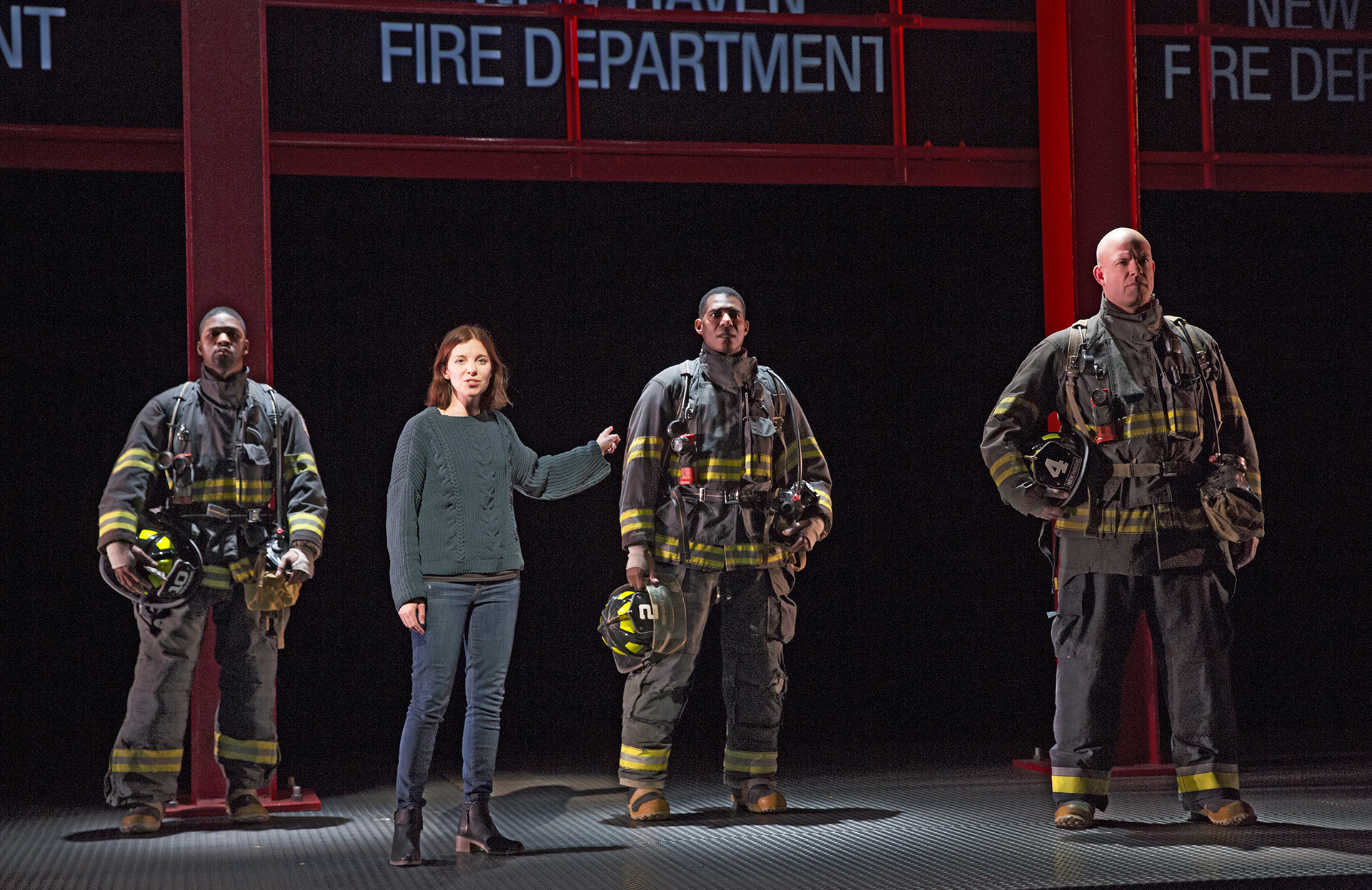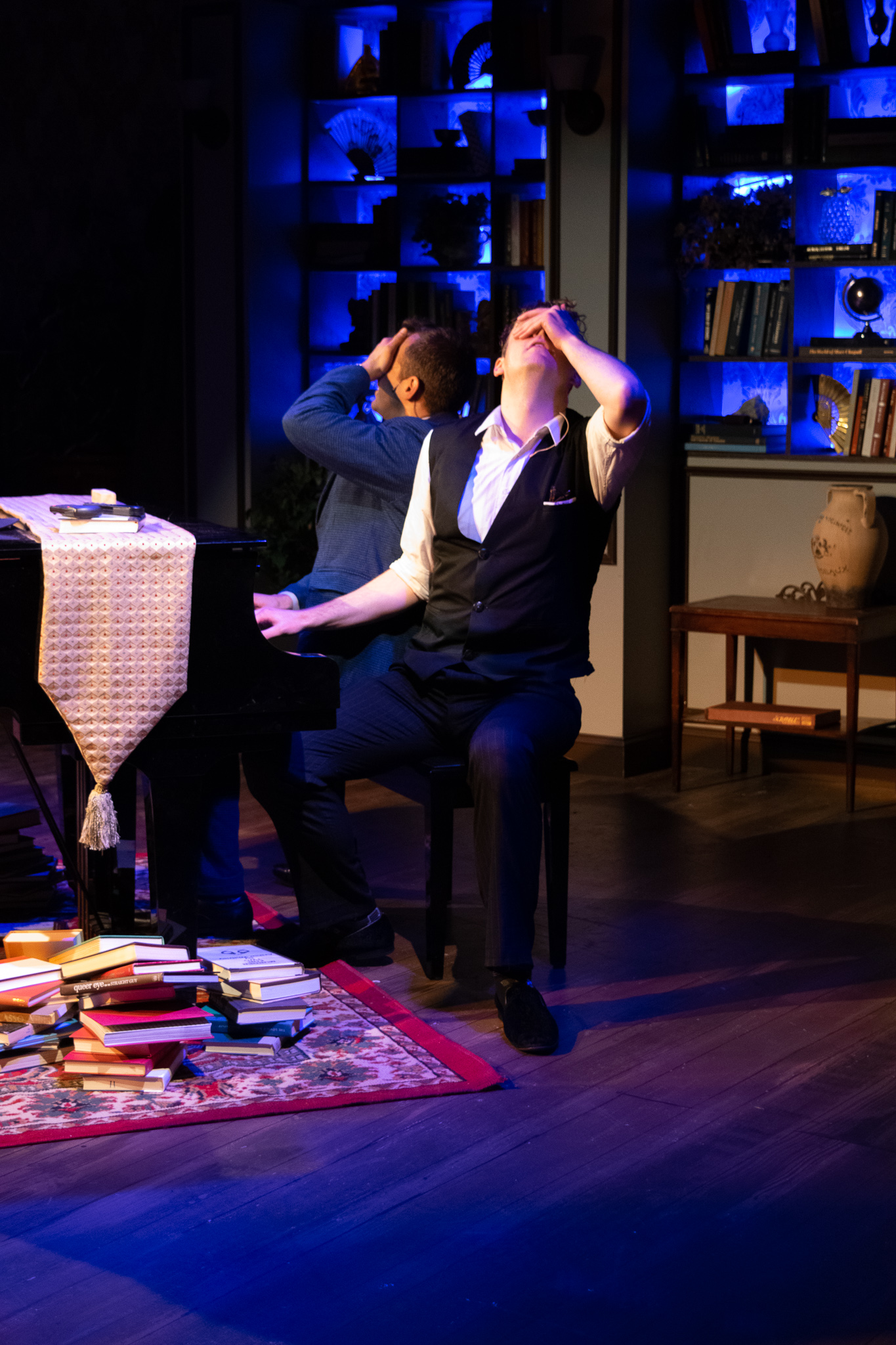Review of The Revolutionists, Playhouse on Park
Google Lauren Gunderson and you’ll learn that she is the living playwright most often produced in our country. Whatever that translates into, in number of productions, the playwright’s work has been a strange rarity in Connecticut and that’s reason enough to head to Playhouse on Park, where Gunderson’s playful, satiric, and serious play The Revolutionists runs through March 10.
Gunderson’s play, from 2017, achieves a quality many plays aim for these days: a relevance to our times, even if that causes strained analogies and anachronistic misreading. Here, the anachronisms, the meta gestures, the tongue-in-cheek tone that renders historical figures in our terms are all deliberate and mostly fresh conceptions. Directed by Sarah Hartmann, it’s at times a fast-moving historical farce, and almost a cri de coeur about the challenge of making art in a time of political factions and intellectual chaos. Offering vivid feminist revisionism, The Revolutionists puts the exchanges of its four notable female characters at the heart of the action. Or rather at the heart of trying to decide what action to take in perilous times.
The play is set at the height of the Reign of Terror in the Paris of 1793 when leftist forces, having seized power in the Revolution, were putting to death anyone sympathetic to the ancien régime and, in many cases, anyone who contested Jacobin rule. It was a time for a particularly heinous mob-violence and for extremisms of all kinds, not least in the journaux of the day such as that of Jean-Paul Marat.
Charlotte Corday (Olivia Jampol), Olympe de Gouges (Rebecca Hart), Marianne Angelle (Erin Roché) (Photos: Meredith Longo)
Four of the play’s three women fell to the guillotine in actual life: Olympe de Gouges (Rebecca Hart), a feminist playwright and political activist, Marie-Antoinette (Jennifer Holcombe), the deposed queen of France, and Charlotte Corday (Olivia Jampol), the assassin of Marat; the fourth, Marianne Angelle (Erin Roché) is a fictionalized composite figure who combines Marianne (the personification of the ideals of the French Republic) with abolitionists of color who hoped, in the new France, to end slavery in the French Caribbean. Marianne’s husband is a political prisoner in Haiti and Marianne comes to Olympe in hopes she will write pamphlets in protest.
She finds Olympe in the throes of a writer’s crisis, desperate to write a new play for the times, a play that might be amazingly like The Revolutionists, even as Olympe admits it’s never a good idea to write a play about writing a play. Ironies abound, and Gunderson’s play (with apologies to Marie-Antoinette) manages to have its cake and eat it too. It sends up the kind of play it is, or might be, and still makes the most of its central conceit: the creative crisis of the playwright, with her need to address inequality and tyranny, to uphold feminism and freedom, and to be profound, inspiring, entertaining, and playable in a couple hours or less. Does The Revolutionists succeed? Hell, yeah. It’s even under 90 minutes.
Olympe de Gouges (Rebecca Hart)
Gunderson peppers the play with jokes at the expense of our contemporary sensitivities, even as she manages to wink at the hip and amuse the cynical. The situation is dire enough, and characters really do die. There’s a heightened sense of danger that can intrude at any moment, as with the dramatic sound effects and lighting that signal the reach of the Terror. Meanwhile, through much of the play, there is no lack of feminine vanity nor of the kind of ditziness that has been a stock-in-trade of screwball comedies since forever. The ladies are all likeable types, as if college dormmates trying to decide what to major in now the revolution’s here.
As Olympe, Rebecca Hart is earnest with the kind of out-loud thoughts familiar from just about any teen drama (especially ones that have Winona Ryder). She’s at times a straight-man, at times a foil to the three interlocutors who burst rather peremptorily into her creative reveries. First, there’s Marianne, with the two getting on like sisters of the revolution who know they may only have each other, in the end. Marianne is more of a realist than Olympe, preferring pamphlets to plays, and Erin Roché keeps her attitude toward the other characters sharp throughout. That includes would-be assassin Charlotte Corday (Marianne wants to know right away if Charlotte has been jilted recently). Charlotte is counting on her looks to get past Marat’s defenses and do the bastard in for the part he played in the executions. The others tease her with alternatives, but nothing will stop her fixed purpose, played by Olivia Jampol with a bit of Valerie Solanis-like mania. Finally, there’s Jennifer Holcombe’s Marie-Antoinette, a giggling, preening, preppie with, as she notes, a surprisingly trenchant view at times.
Marie-Antoinette (Jennifer Holcombe)
David Lewis’s set has the advantage of being always a set, pointing out the play-within-the-mind elements over any effort to distinguish, say, a study from a prison. The four are trapped as soon as they walk onto the playing space and the only way out is through the door that leads to death—effectively enacted by blood-red ribbons. Kate Bunce’s costumes play-up the anachronistic cartoonishness of these caricatures while letting each look her part. Lampol’s Pre-Raphaelite tresses and Holcombe’s confectionary wig help with the visuals. As do the masks and outfits donned by Jampol and Roché as they play male mockers of the doomed, speaking for the mob. Such scenes up the tragic dimension of the show, while giving each a kind of “voted-off-the-island” send-off.
Marianne Angelle (Erin Roché), Charlotte Corday (Olivia Jampol)
While there are some groaners that might put you mind of the “levity or death” desperation of less ambitious comedies, the speakers in The Revolutionists are too vivacious to let deflation be their fate. The play might feel at times like a work in progress, a rehearsal, a late-night panic session or even an SNL sketch—in a way it’s all that and more, because it’s also a pointed reminder of the fates that befell strong, inspirational women who, at least in their own lives, were on the wrong side of history. All the more reason to make them engaging emblems of herstory.
The Revolutionists
By Lauren Gunderson
Directed by Sarah Hartmann
Scenic Designer: David Lewis; Lighting Designer: Rider Q. Stanton; Costume Designer: Kate Bunce; Stage Manager: Mollie Cook; Sound Designer: Rider Q. Stanton; Props Master/Set Dresser: Eileen O’Connor
Cast: Rebecca Hart, Jennifer Holcombe, Olivia Jampol, Erin Roché
Playhouse on Park
February 20-March 10, 2019
















































